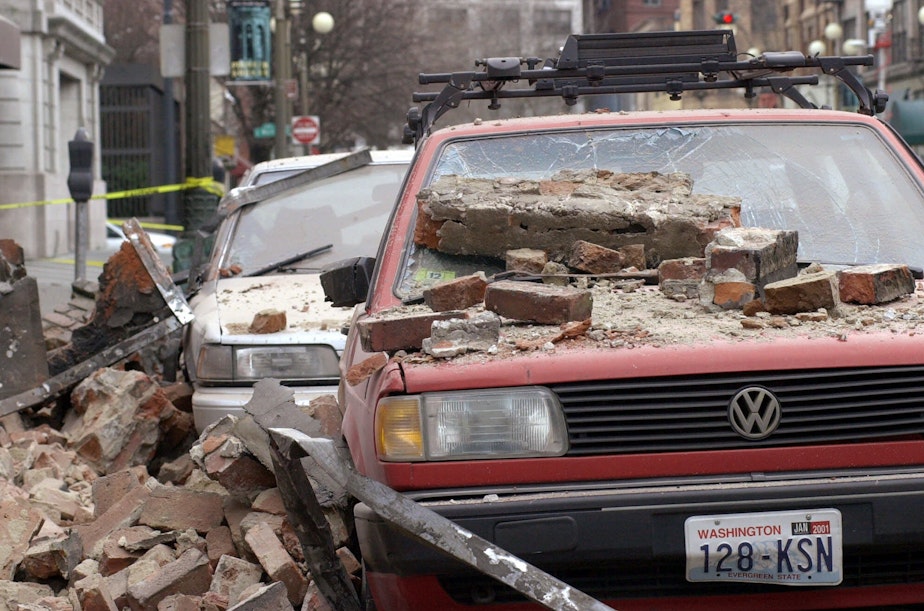Two decades later: What's changed since the Nisqually earthquake?

If you were in the Puget Sound region on February 28, 2001, you remember exactly where you were right around 10:54 in the morning.
That's when the 6.8 magnitude Nisqually quake hit the region. It was the strongest earthquake to hit us since 1965.
One local student interviewed on KUOW at the time remembered the moment this way: "We went underneath the table for a few, like, minutes. And then, our principal came on the intercom and said evacuate the building. I'm like, OK, say no more. I'm out of here!"
And you didn't even have to be here to feel it. Reports of shaking came in from as far away as Utah and British Columbia.
But here we are now, 20 years later.
A lot has changed since 2001, from new alert systems coming online to some of the science behind these unpredictable events that we know are in our future.
Bill Steele is a seismologist with the University of Washington. He says we're now able to process potentially life-saving data in a matter of seconds.
Sponsored
"In two-tenths of a second, we would have a pretty good estimate of the magnitude of the earthquake. We would locate it well. And then, that information would update in the seconds that more data came in," he says, describing how the soon-to-be public Shake Alert system.
The system does not predict when an earthquake will happen. Rather, it will trigger an on mobile devices — similar to an Amber alert — once an earthquake is detected.
Steele says that could give people precious seconds to "drop, cover and hold on."





